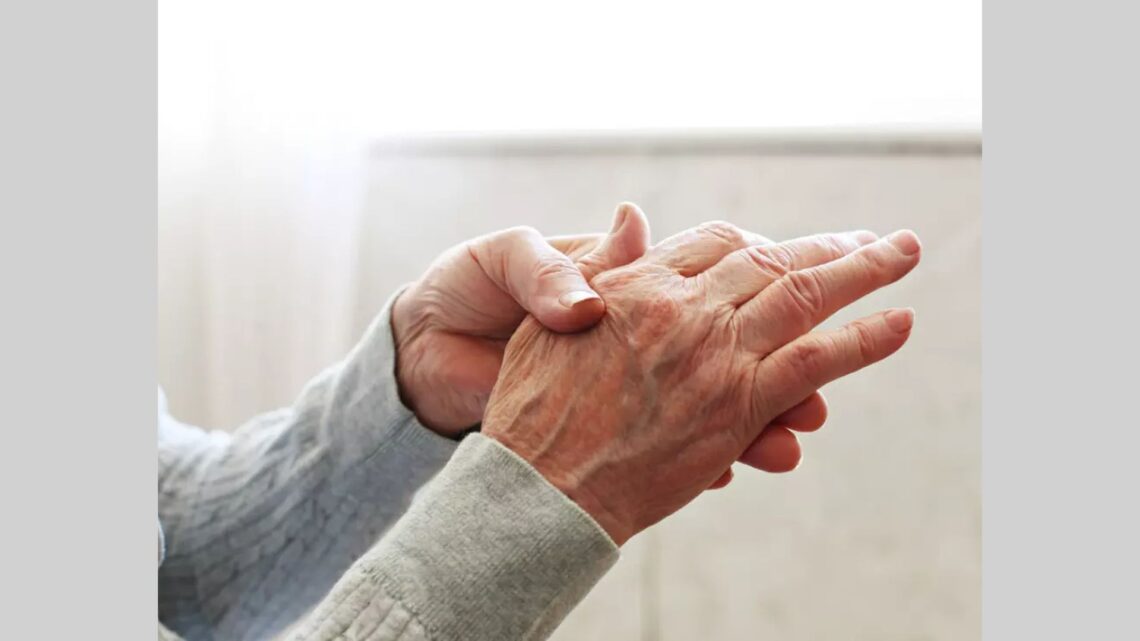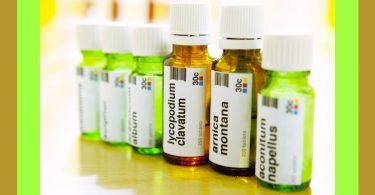Post Viral Arthralgia
Post viral arthralgia, as the name suggests, is a chronic condition which arises after a person is infected and has battled with viral infection. There are many theories for the development of post viral arthralgia, but most commonly it is associated with auto immunity, i.e. the body’s self harm against an infection, disease or stress.
Due to cross reactivity, even after the virus is eliminated, it causes short term, as well as long term inflammatory changes in the joints and muscles. This commonly seen complication is actually a large clinical burden in almost every country of the world.
VIRAL ARTHRITIS IS KNOWN TO OCCUR WORLDWIDE
One of the most consistent and debilitating manifestations of CHIKV-induced disease in people consists of an often widespread, severe and incapacitating arthralgia, occurring in 85-100% of people with symptomatic infection.
(https://www.ncbi.nlm.nih.gov/pmc/articles/PMC5204064/)
Etiology
Although it is very difficult to establish an association of specific virus with the post viral arthralgia, but there are few viruses that can give rise to post viral arthritis such as:
- Hepatitis viruses (A, B and C type)
- Parvovirus
- Rubella virus
- Alphaviruses (e.g. Chikungunya virus) and flaviviruses
- Retroviruses etc.
Effects on Health
Earlier considered to be a mild disorder which does not require any special attention, post viral arthralgia has spread to each and every segment of the population. Due to rise in the prevalence of viral diseases their associated complaints are also rising alarmingly. There are various other co-morbidities and risk factors which are associated with the post viral arthralgia such as:
- Low immunity which favours auto-immune processes to harm the body.
- Lack of Vitamin D which has predisposed almost half of the population for bone and muscle related diseases.
- Lack of healthy lifestyle.
- Inadequate physical activity, along with sedentary lifestyle.
- Nutritional deficiency etc.
Presentation
The prime presentation of post viral arthralgia is joint dysfunction. The chronicity and duration of infection decides the actual symptoms and comorbidities. Commonly it can be presented as:
- Pain in single large joint
- Pain in multiple large joints
- Pain in small joints
- Pain in muscles
- Decreased quality of life due to less physical productivity
- Etc.
Symptoms:
- Pain
- Difficulty performing day to day activities
- Morning stiffness
- Redness and swelling in joints
- Discomfort
Diagnosis
The diagnosis of post viral arthralgia depends upon:
- History: In the majority of the cases, a patient presents with a clear cut picture of symptoms developed after fever, viral infection, etc. Therefore, it is very important to ask for the detailed medical history.
- Physical Examination: Since the condition is associated with joints, bones and muscles, a thorough physical examination (following best practices of clinical examination) is sufficient to describe the location involved with details.
- Laboratory Dignosis (General/specific): In majority of the cases, general laboratory diagnosis is made by simple investigations such as blood indices (CBC, Rheumatoid Factor, Serum Calcium, Vitamin D, Vitamin B12, PTH, TSH etc.), X ray of the affected joints etc. In a few cases where specific viral pathologies are suspected, specific investigations and expert opinions are sought for.
Differential Diagnosis
It is very important to differentiate the condition with commonly prsented musculoskeletal disorders such as:
- Rheumatoid Arthritis
- Psoriatic Arthritis
- Ankylosing Spondylitis
- Rheumatic Fever
- Sjogren Syndrome
- SLE
- Lyme Disease
- Polymyositis etc.
Conventional Treatment
In the conventional system of medicine, if the presentation is mild it is usually treated symptomatically with analgesics or nonsteroidal anti-inflammatory drugs. In a few cases, low dose of prednisone is also used in conjugation. But the real challenge arises when there is slow response and irrational usage of pain killers. The over the counter misuse of pain killers is also becoming an associated clinical challenge. In cases, where specific systemic disease and cause is identified, the treatment becomes targetted.
Role of Homeopathy in post viral arthralgia
- Homeopathic medicines stimulate body’s inner strength and improve the overall immune system to work in homeostasis. The aim of the treatment is to reduce the disease burden and to improve the overall health. This method is considered the best method of treatment because it follows the holistic approach and not only alleviating the symptoms alone.
- The constitutional, well known as individualized homeopathy treatment is known to reduce the tendencies and to improve the overall health.
- The prescription is dependent upon symptoms, signs, tendencies, history and causation.
- The treatment can be curative, palliative or supportive depending upon state and staging of disease.
- Homeopathic medicines can be taken safely along with other/conventional medications (ADD-ON Therapy).
In addition to constitutional/individualized medicines, the following medicines are frequently used on the basis of causation and symptom similarity:
BRYONIA ALBA: Knees stiff and painful. Hot swelling of feet. Joints red, swollen, hot, with stitches and tearing; worse on least movement. Every spot is painful on pressure. Constant motion of left arm and leg (Helleb).
CARBOLICUM ACIDUM: Cramps in fore part of leg, close to tibia during walking. Gnawing pains in shin bones. Arthritis.
COLCHICINE: Convulsive jerking of right hand; rheumatic fever, gout, endo and pericarditis, pleurisy, arthritis, deformans in early stages; intense pain of rheumatism. (Preferred in lower triturations such as 3x).
FORMICA RUFA: An apt remedy for arthritic conditions. Gout and articular rheumatism; pains worse, motion; better, pressure. Right side most affected. Chronic gout and stiffness in joints. Rheumatic pains; stiff and contracted joints. Muscles feel strained and torn from their attachment. Weakness of lower extremities. Rheumatism comes on with suddenness and restlessness.
ICHTHYOLUM: Polyarthritis. Chronic rheumatism. Uric acid diathesis. Hay-fever. Lameness in right shoulder and right lower extremity.
IODUM: Acute exacerbation of chronic inflammation. Arthritis deformans. Acts prominently on connective tissue. Joints inflamed and painful. Pain in bones at night. Rheumatism of nape and upper extremities. Nightly pains in joints; constrictive sensations.
MEDORRHINUM: Pain in back, with burning heat. Legs heavy; ache all night; cannot keep them still (Zinc). Ankles easily turn when walking. Burning of hands feet. Finger-joints enlarged, puffy. Gouty concretions. Heels and balls of feet tender (Thuja). Soreness of soles. Restless; better, clutching hands.
NATRUM PHOS: Weariness; aching in wrists and finger-joints. Hamstrings sore. Synovial crepitation. Rheumatic arthritis.
POLYPORUS PINICOLA: Useful in deep dull, severe pain in bones especially after intermittent, remittent and bilious fevers, with headache, yellow tongue, constant nausea, faintness at epigastrium, and constipation. Rheumatic complaints preventing sleep.
RHUS TOXICODENDRON: Rhus affects fibrous tissue markedly-joints, tendons, sheaths-aponeurosis, etc., producing pains and stiffness. Post-operative complications. Ailments from strains, over lifting, getting wet while perspiring. Septic conditions. Rheumatism in the cold season. Hot, painful swelling of joints. Pains tearing in tendons, ligaments, and fascia. Rheumatic pains spread over a large surface at nape of neck, loins, and extremities; better motion (Agaric). Soreness of condyles of bones. Limbs stiff paralyzed. Tenderness about knee-joint. Loss of power in forearm and fingers; crawling sensation in the tips of fingers.
STELLARIA MEDIA: Rheumatoid pains in different parts of the body. Sharp pain in small of back, over kidneys, in gluteal region, extending down thigh. Pain in shoulders and arms. Synovitis. Bruised feeling. Rheumatic pains in calves of legs.
SYPHILLINUM: Sciatica; worse at night; better about day-break. Rheumatism of shoulder-joint, at insertion of deltoid. Run-around. Severe pain in long bones. Redness and rawness between toes (Sil). Rheumatism, muscles are caked in hard knot or lumps. Muscles contracted in hard knots.
THYROIDINUM: Rheumatic arthritis with tendency to obesity, coldness and cramps of extremities. Peeling of skin of lower limbs. Cold extremities. Aching pains. Edema of legs. Trembling of limbs and entire body.





